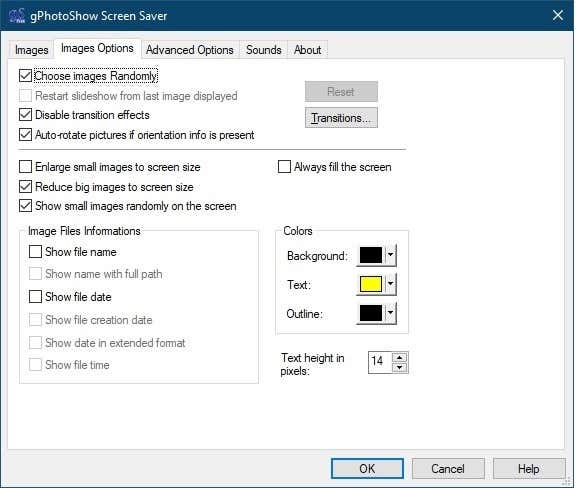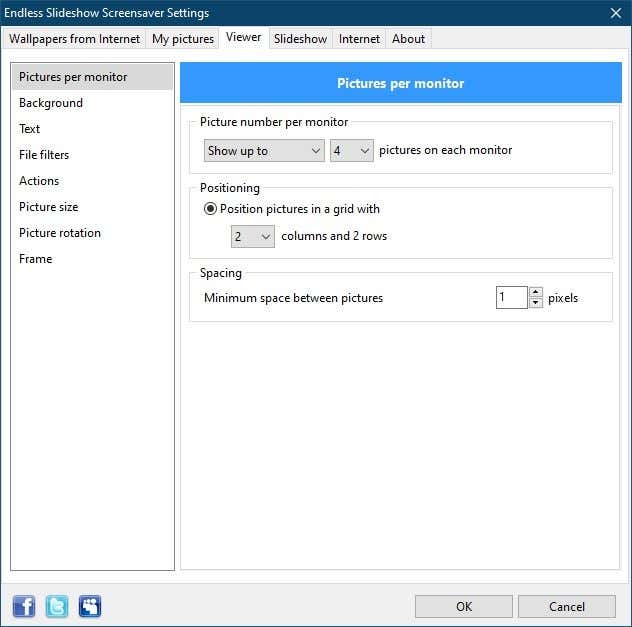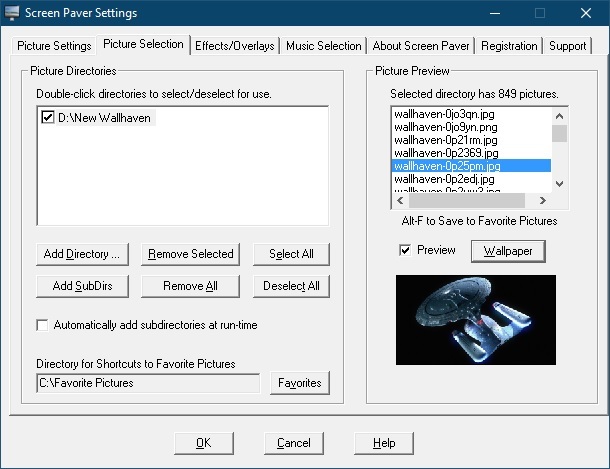While LCDs can suffer a permanent image burn, that really only happens with commercial screens at places like airports where the image has static elements for hundreds and hundreds of hours. As a desktop computing issue, it just doesn’t matter any more. Yet screensavers still have their uses. They can be used as a security measure if you forget to lock your computer when walking away from it. It’s also an attractive decoration when the PC isn’t in use. Every iteration of Windows has come with quite a decent selection of screensavers, but Windows 10 seems to be a step back in one particular way. In Windows 7 the built-in slideshow screensaver had a relative wealth of options. You could have interesting transitions, have images appear at random spots on the screen and generally spice things up when displaying your picture collection. In Windows 10 you’re limited to a centered image and no transitions at all. So while Windows 10 Live Wallpapers are pretty cool, those of us who want to showcase their own collection of images are not too happy. So we went on the hunt for some alternatives that could bring back the charm of the old screensaver and boy did we find some good ones!
gPhotoShow (Free and Pro
Version 10.90 Euro)
gPhotoShow manages to be quite feature-rich, while still being pretty streamlined and easy to use. You can add multiple folders as image sources, but unfortunately you can’t show multiple images on the screen at the same time. The first big advantage gPhotoShow has over the Photos screensaver is the random placement of small pictures. Windows Photos only supports a centered view, which can make small image look goofy on big, wide monitors. The Pro version of gPhotoShow offers quite a few extra features, but none that the average user absolutely must have. The free edition is pretty much what you want from a decent slideshow screensaver. Some Pro features that might be worth the asking price include pan & zoom animation, TIFF support, panoramic photo support, video clip support and the ability to remember the last image in the sequence between plays. For our money, the “scrapbook mode”, which combines several images to fill the screen, is the most worthwhile reason to buy the Pro version. However, the next screensaver option offers an almost identical function for free.
Endless Slideshow (Free and
Pro Version $19.95)
Endless Slideshow’s main claim to fame is the fact that it can automatically download pictures within several sets of predefined themes. The upside of this is that you can be surprised with pictures you’ve never seen before. It’s also great if you aren’t the kind of person that enjoys curating your own picture collection. Endless Slideshow is incredibly feature-rich, and you can tune it pretty much to your exact needs. Multiple pictures per screen, custom background, plenty of sizing options and clearly labeled functions make it a doddle to use. Unfortunately, setting the program to also include images it automatically downloads itself is also a bit of a gamble. For one thing, you might see images that you really don’t like. In the worst case, there’s always the concern that some inappropriate pictures could sneak in by accident. That never happened during testing, but honestly the “endless” part of the value proposition is actually the least interesting part of the package. As a pure slideshow screensaver, Endless Slideshow is brilliant, but there are some annoying limitations in the free version. Having fewer transitions and limiting the number of on-screen images to four per screen isn’t a huge deal. However, being able to manually advance slideshows is a feature that should always be there. Regretfully, the free version of Endless Slideshow doesn’t let you do that. That might be a dealbreaker for some, since the default Photos screensaver does allow for this. Still, Endless is better overall and you can create some really interesting custom looks with it. Should you stump up the twenty bucks for the Pro version you’ll get your manual picture browsing function, plus a whole lot more. A single Pro licence also lets you install the software on two computers, so if you have two machines it works out to ten bucks apiece. It’s a great slideshow screensaver and everyone should try the free version at the very least.
ScreenPaver ($14.95)
Unfortunately, ScreenPaver does not have a free version and you’ll have to pay the asking price if you want to use it. The good news is that there’s a 30-day trial, with no feature limitations other than an annoying reminder of how many days you have left. For your money you get a solid, fully-featured slideshow screensaver with the functions you’d expect. You can randomize the position of images, stretch them, scale them down and generally tell the software how you want images to be handled. This seems like a basic requirement for a screensaver like this, yet the one included with Windows 10 does none of this except for randomizing images. Speaking of picture selection, ScreenPaver has a pretty robust system to choose which directories you draw your pics from. You can pull them from multiple drives, select subfolders and even mark certain pictures within a folder as a favorite. It doesn’t have as many transitions as some slideshow screensavers, but it’s doubtful that many people would be concerned by only having a few dozen transition effects rather than hundreds of them. Worth the $15? It’s a solid buy, especially if you don’t quite get what you want with the two free options above.



